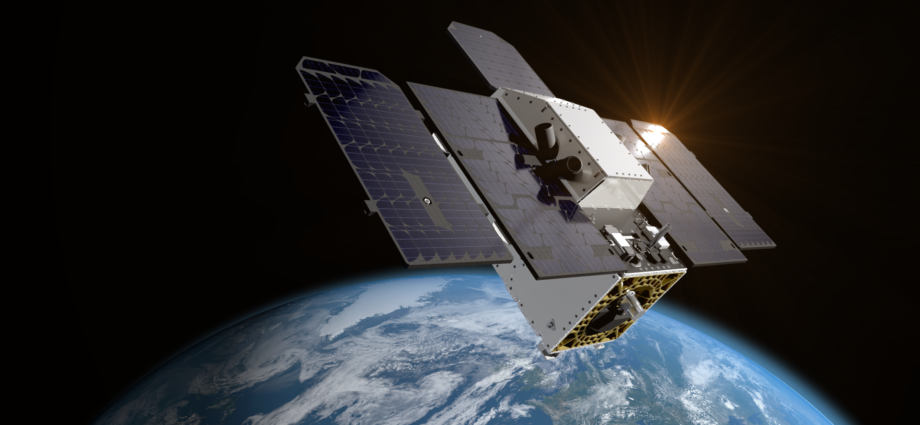
Tanager 1 satellite will be able to monitor on a global scale methane emissions that are more potent than carbon dioxide emissions even though they are more short-lived
by Jacob Lee
August 28, 2024
SpaceX, the private aerospace company founded by Elon Musk, has launched into space nonprofit Carbon Mapper’s groundbreaking satellite aimed at monitoring methane emissions on a global scale. Launched from the Vandenberg Space Force in California on Aug. 16, the Tanager 1 satellite will track methane emissions with unparalleled accuracy — “down to the level of individual facilities and equipment.”
The Importance of Methane Tracking
Methane is an extremely potent greenhouse gas. While it has a much shorter atmospheric lifetime than carbon dioxide — around 12 years compared to centuries — it absorbs significantly more energy in the atmosphere.
According to the International Energy Agency (IEA), methane is responsible for around 30% of the current rise in global temperatures, with the energy sector being one of the largest contributors.
Tanager 1 aims to address this oversight by providing precise data on methane emissions from specific sources. The satellite will be able to detect methane leaks as small as 100 kilograms per hour from orbit, a capability that could revolutionize the way industries and governments approach emission reductions.
The Tanager 1 Methane-Tracking Satellite
The satellite was developed by the Carbon Mapper and launched in partnership with NASA, Arizona State University, Planet Labs, and RMI. The project, financially backed by Bloomberg Philanthropies, the High Tide Foundation, the Grantham Foundation for the Protection of the Environment, the Zegar Family Foundation, and the Children’s Investment Fund Foundation, hopes to hold major polluters accountable by making the data collected publicly available and sharing the most accurate and up-to-date information possible.
Activists will be able to use this data to bring attention to specific incidents of high emissions, applying pressure on both industries and governments to take immediate action. Policymakers can leverage real-time insights to craft more informed regulations and policies, ensuring that environmental laws are based on the most accurate and up-to-date information available.
This level of transparency has the potential to drive a cultural shift within industries, encouraging companies to proactively manage and reduce their emissions rather than reactively responding to regulatory pressures. Hopefully, it will drive significant changes in the way industries manage their emissions, potentially leading to a reduction in global methane levels.
The launch of Tanager 1 is also a testament to the improvements in satellite monitoring. Unlike traditional satellites, which rely on passive detection methods, Tanager 1 uses active sensing technology that captures high-resolution images of methane plumes, crucial for tracking emissions in difficult areas, such as offshore oil rigs and pipelines. These areas have traditionally been under-monitored due to the difficulties associated with accessing and observing them.
Tanager 1’s advanced technology overcomes these challenges, ensuring that emissions from even the most inaccessible areas are accounted for.
Methane-Tracking Satellites: A Step Towards a Sustainable Future
As the world contributes to grappling with the escalating implications of climate change, Tanager 1 marks a significant milestone in the global effort to reduce greenhouse gas emissions. The success of Tanager 1 could further expand our ability to combat climate change from space. As technology continues to improve, the integration of space-based monitoring systems into global environmental strategies will likely become increasingly important.
Subscribe to our newsletter.
This article was originally published on IMPAKTER. Read the original article.

